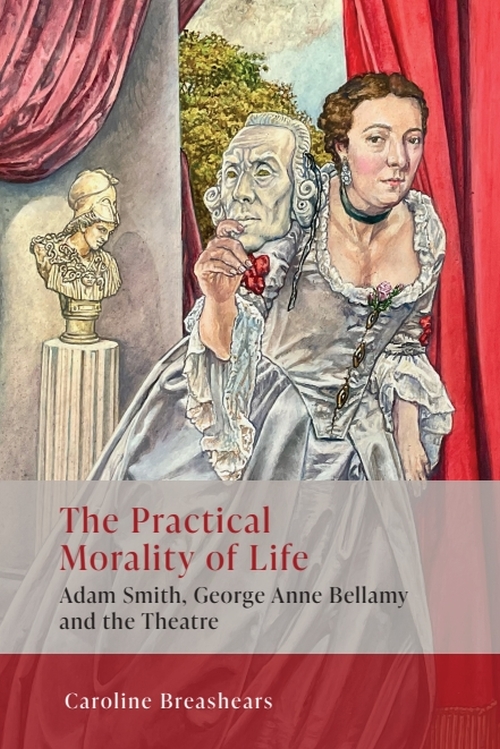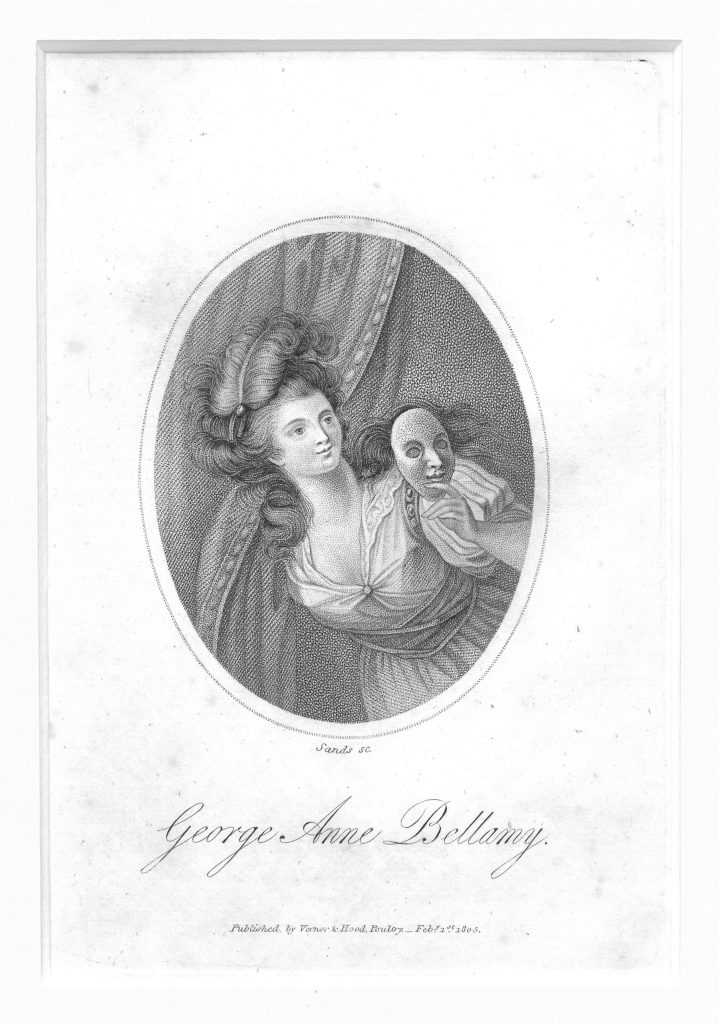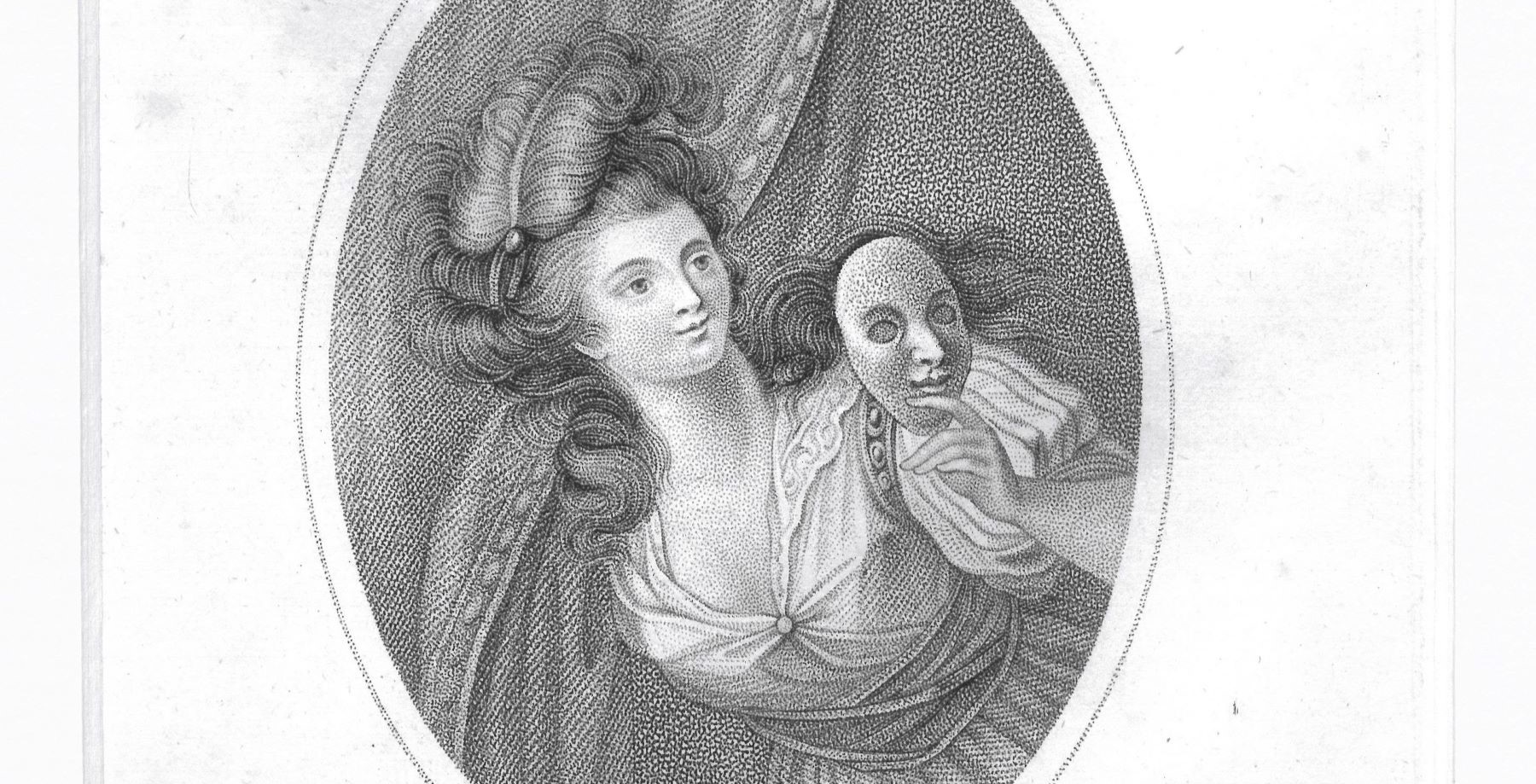
By Caroline Breashears

Caroline Breashears is the author of The Practical Morality of Life: Adam Smith, George Anne Bellamy, and the Theatre, a study of how a scandalous actress influenced one of the greatest philosophers of the eighteenth century.
1. The It Girl of the London Theatre
In the mid-eighteenth century, George Anne Bellamy was a star in the London and Dublin theatres. Audiences celebrated her performances of Monimia and Juliet, and she created the role of Cleone in Robert Dodsley’s play of that name. In fact, Bellamy’s performance in the latter part inspired Samuel Johnson to exclaim that he would write verses on her himself. Her memoir details the glories and quarrels of the most famous performers of her day, including David Garrick.
2. A Political Insider
Bellamy’s fame brought many suitors, including the army agent John Calcraft, a protege of the Whig politician Henry Fox. She details their work together in gaining the agencies of army officers and the subsequent wealth they accrued during a period of war. Her memoir exposes the ambition and greed of these and other well-known politicians, including her father, Lord Tyrawley.

Published by Vernor and Hood, 1 February 1805
3. Trailblazer in Glasgow and Grahamstown
Bellamy also performed in the Canongate Theatre in Edinburgh, and a group of investors from Glasgow invited her to perform in a theatre they hoped to build there. That theatre was blocked by a university committee that included Adam Smith, so investors erected a theatre on Alston Street in nearby Grahamstown, Glasgow’s ‘forgotten village’. A mob of religious extremists burned part of the theatre stage before Bellamy arrived, and her courage and grace rallied the people of Glasgow in support of the theatre. Adam Smith may have had this incident in mind in his account of the theatre in The Wealth of Nations.
4. Bellamy published a Memoir
Bellamy’s experiences in society, the theatre, and politics provided ample material for her to publish her memoir, An apology for the life of George Anne Bellamy. Her accounts of the theatre and society’s famous politicians made it a bestseller that appeared in four editions. The book offered her both profit and a means of vindication as she recounts her moral and financial struggles.
5. Adam Smith Owned a Copy of Bellamy’s Apology
The economist and moral philosopher Adam Smith owned a copy of the third edition of Bellamy’s Apology (1785) along with the bonus sixth volume published later that year. His copy shows evidence of reading, including dog-eared pages and a heavily rumpled section in the chapter about Bellamy’s time in Edinburgh and Glasgow. In fact, there is considerable evidence that Bellamy’s Apology was one of Smith’s inspirations for his final revisions to The Theory of Moral Sentiments. To find out more about Bellamy’s surprising influence on Smith, see The Practical Morality of Life: Adam Smith, George Anne Bellamy, and the Theatre.
About the Author
Caroline Breashears is Professor of English at St. Lawrence University. Her scholarly publications include Eighteenth-Century Women’s Writing and the ‘Scandalous Memoir’ and articles in journals such as Modern Philology, Eighteenth-Century Fiction, Script & Print, and Philological Quarterly. Her writing for general audiences has been featured in venues such as Law & Liberty, Real Clear Markets, Real Clear Policy, and Real Clear Education.
Explore related articles on the EUP Blog
Adam Smith and Scotland in the Age of Enlightenment
Scottish Philosophy: Project and Legacy
What do these three Victorian actresses have in common?






